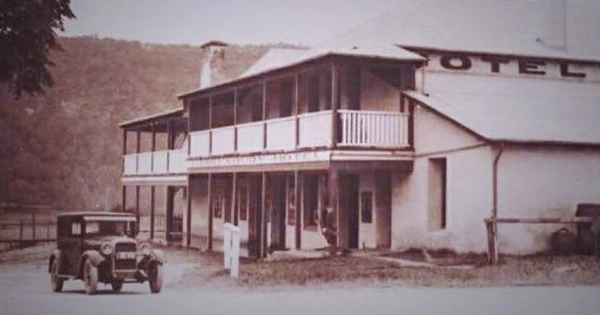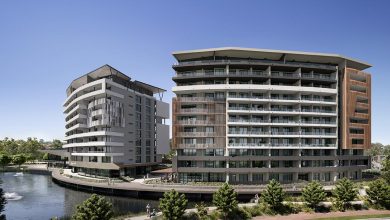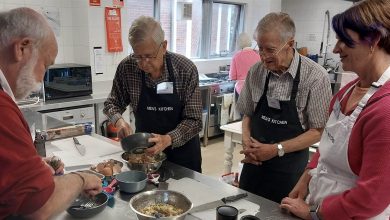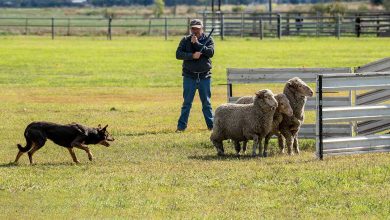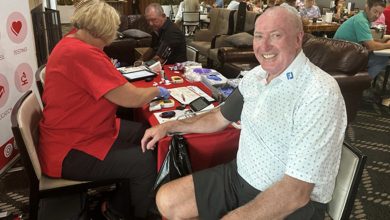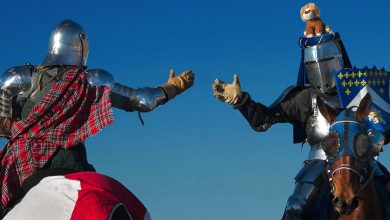I’ll Drink to That
Every nation is renown for many things. They may be known for a relaxing lifestyle, culture, history and the like. Here in Australia we are known for our sunshine (if it is not raining), the beaches, the relaxing lifestyle and also known for the ruggedness of the country and hardworking on the land.
One feature of the Australian culture that has been depicted in movies and song is the local pub.
We all know of the “Walkabout Hotel” which featured in the Crocodile Dundee movies, and of the hotel scenes in the movie “They’re A Weird Mob” and what about the Slim Dusty songs where he sings about having a drink with Duncan in the “Town & Country” or the song “The Pub with No Beer”.
In recent times many have asked me about what is happening with the “Bull & Bush”? I have also mentioned in columns recently pubs such as the “Bird in The Hand” and the “Stanhope Arms” which both stood at Kellyville plus “The Bird In The Hand” at Pitt Town.
These thoughts have led me to think of the various watering holes in our Hills to Hawkesbury district. Whilst many of the hotels maybe of recent construction, we do have a few that have some interesting history.
Some of the historic inns or hotels still standing and serving their communities within our area include the Wisemans Ferry Hotel, Macquarie Arms Hotel at Windsor, The Settlers Arms at St Albans and The Fiddler (formerly known as The Mean Fiddler) at Rouse Hill. Other hostelries that are of interest include the “Ettamogah” at Rouse Hill.
To start with the “Wisemans Ferry Hotel”, once the home of Solomon Wiseman after whom the village is called. He was first buried within the grounds of his home then called “Cobham Hall” later he was reburied in the grounds of the local church and after that church was damaged in a fire he was reburied once more in Wisemans Ferry Cemetery.
Macquarie Arms at Windsor. This great old pub can safely claim the title of “Oldest Pub In Australia” (on the mainland). In 1815 a “spacious and commodious inn” was constructed by Richard Fitzgerald adjoining Thompson Square and was known as the Macquarie Arms.
In order to save Government the cost of providing such a structure, Macquarie had given “Mr. Fitzgerald a large allotment in the square on the expressed condition of his building immediately thereon a handsome commodious inn of brick or stone and to be at least two stories high.” (Macquarie’s Journal of his tour s- 12th Jan. 1811)
The Settlers Arms. Established in 1836, the Settlers Arm Inn is built from convict – hewn sandstone. Surrounded by mountains, it nestles alongside the Macdonald River within the tiny village of St. Albans, the heart of the Macdonald Valley. Of Georgian simplicity, the hotel became a stopover for Cobb and Co. stagecoaches travelling between Sydney and Newcastle in the nineteenth century.
The Fiddler. Previously operated under the names “White Hart Inn”, “Royal Oak Inn”, “The Windsor Wayhouse” and “The Mean Fiddler Inn”. The inn is an important example of the early colonial coaching inn of the 1820-1840’s period and is the only surviving inn on the Windsor Road, from this time, that operates today as a licensed establishment. By 1818 Windsor Road was still a rough track and in 1821 Charles Davis obtained a land grant for the area that included the site of the inn. In 1829 he leased part of his land to William Cross who constructed an inn, which he named the “White Hart Inn”, acquiring a publican’s license in 1830.
The inn was one of the earliest licensed premises in the colony. “White Hart Inn” was a single storey building. By 1846 the inn had been purchased by John Booth who changed the name to the “Royal Oak Inn”. In 1852 the inn was sold to George Sheffield and sold again in 1858 to John Seath who changed the name back to the “White Hart Inn” and operated the inn until his death in 1876.
The construction of the Blacktown- Richmond railway in 1864 saw a downturn in road traffic and hence hard times for the inn and its days were numbered. By 1916 when the site was sold to Thomas Peterson, it had ceased to operate.
The building was in need of considerable repair, both internally and externally. By 1923 Peterson had replaced the original shingle roof with tiles and repaired the brickwork.
In 1949 the inn, then a residence, was sold to Stuart Bins. In 1962 the Windsor Road was widened and sealed (up to then it had changed little from when it was first used in 1806) and the following year the Kroehnert family aquired the site.
The Kroehnert’s planned to operate the inn (then in use as an antique shop) as a restaurant, but it was not until 1970 that the inn began trading again as a colonial style restaurant, under the name “The Windsor Wayhouse”. In 1976 it was leased to Graham Bridgewater and Kiaran Waner who renovated the inn and operated it as a licensed restaurant “The Royal Oak Inn”. In 1983 it was sold once more and in 1996 began operating as a licensed tavern under the name, “The Mean Fiddler”. It now has new owners and is now called “The Fiddler”.

